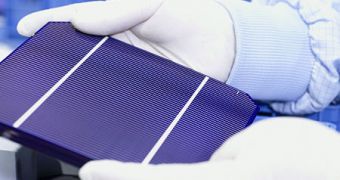At times when governments don't seem eager to invest in renewables, scientists try to improve the alternative sources of energy on their own. Solar power, considered to be one of the safest, most efficient means of producing green energy still requires a lot of improvements.
According to experts in this field of activity, the current solar panels manufactured out of silicon, a semiconductor material, are inefficient since they are able to transform only 7% of the absorbed light into actual energy.
Therefore, scientists thought about replacing the material which is presently used with a far better alternative. New solar panels might be produced while relying on nano-antennas instead of semiconductors, in the near future.
The expected result would represent an increased conversion rate from sunlight into green energy, which will power our homes and buildings.
This path is explored by Profs. Koby Scheuer, Yael Hanin and Amir Boag from Tel Aviv University's Department of Physical Electronics. In order to prove that their prototype is actually working and displaying great result, the scientists tested the innovative antennas, as they measured their capacity to absorb light and generate energy.
At this point in time, after analyzing the results of a first trial, they are able to state that their breakthrough has losses of only 5%, meaning that 95% of the captured sunlight actually turns into electrical power.
After achieving this goal, the scientists plan to explore the potential of their findings further more. The main objective is to improve the entire solar industry, while designing extra efficient PV which will not only manage to increase the total amount of energy, they will also count as cost-effective innovations.
Despite the fact that silicon, the present material on which the entire industry depends, is rather inexpensive, in order to obtain more power larger panels should be implemented, which cost more.
According to the experts behind this project, an eco-friendly strategy should not only minimize the effect we have upon the environment, it also has to return every single dollar invested in its development.
Therefore, they think that their idea will be easy to sell on a large commercial scale, due to the fact that it is quite cheap and comes along with a large list of advantages.
“Our antenna is based on metal -- aluminium and gold -- in very small quantities. It has the potential to be more efficient and less expensive,” declared Prof. Scheuer.

 14 DAY TRIAL //
14 DAY TRIAL //